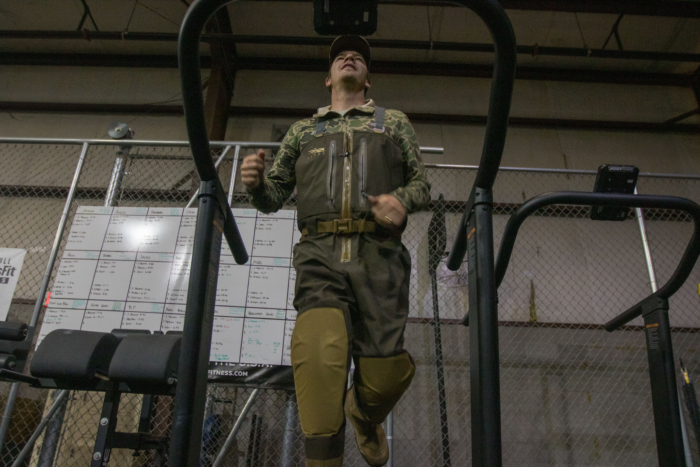“Why on earth is SITKA creating another wader?” I asked myself. I had just reviewed a revamped Delta Pro Zip GTX Wader, so hearing about the release of another high-end wader — the SITKA Delta VentLite GTX Zip Wader ($1,500) — a few months behind, left me scratching my head. There had to be a good reason for it, or SITKA is just getting greedy. I know, a lot of hunters automatically assume the latter.
But, I myself am unbiased. Does SITKA pay me? No. Do I wear SITKA? Yes. Do I enjoy the mocking memes my friends send me about it? Also, yes. But hate all you want. It’s good gear.
When it comes to waders, though, I get extra-picky. I worked as a full-time fishing guide for a decade, most of it in waders, and spent every minute off work hunting, often in waders. I’ve used and abused some from almost every manufacturer and can unashamedly call myself a wader expert.
Fortunately, I was able to get both sets of SITKA waders on hand and put them head-to-head. How are they different? Could you really improve what many consider the best hunting wader ever? Are the VentLites worth the $300 difference?
These are the questions that need answers. So bust out the torches and pitchforks, SITKA haters, because we’re about to dive into some of the most expensive waders the world has seen. And I like ’em.
In short: The main difference between the VentLite waders and the standard Delta Pro is the inclusion of “VentLite” boots, with other minor upgrades. The boots are insulated but breathable and ridiculously light. They’re the best bootfoot waders I’ve worn. For my personal needs, the VentLites are worth the extra cash, although it may be an unnecessary upgrade for others.
-
Very lightweight boots -
Comfortable boots -
Easy to put on and remove -
Solid pockets -
Durable build -
Knee pads -
Easy-to-adjust shoulder straps
Key Upgrade With the SITKA Delta VentLite Zip GTX Wader
These waders are incredibly similar to the standard Delta Pro Zip Waders. In fact, as far as I can tell, the body, GORE-TEX layering, and overall design are an exact replica of the SITKA waders duck hunters have come to know and rely upon.
Due to that, I won’t waste time rehashing the overall build of the wader and reviewing the straps, zipper, etc. That’s all in my review of the Delta Pros, and these are the same in that regard. It’s sufficient to say that the standard Delta Pros are some of the most reliable waders on the market, and bringing those same features to these was a smart move. If it ain’t broke, don’t fix it.
But, some things were “broke.” Well, they weren’t really broke, but there was room for improvement.
The Best Darn Boots
Rubber boots suck. They’re heavy, and they don’t breathe. But there has been no way around that in the past. Sure, you could opt for a neoprene bootie wader and wear lightweight wading boots, but that gets cold in the winter, and the neoprene bootie still doesn’t breathe.
This year, SITKA released one of the coolest rubber boots, the VentLite. Those boots ditched non-breathable rubber and neoprene and instead utilized breathable GORE-TEX laminates and PrimaLoft insulation to create the first breathable “rubber boot.”
And SITKA slapped ’em on waders.
That is the main difference between the two SITKA waders (although there are others, so keep reading). They aren’t a replica of the standalone VentLite boots, though. They seem to have a more durable build, but the basic premise is the same.
On my home scale, the new VentLite Waders weigh 1.2 pounds less than the original Delta Pros. That may not seem like much, but once you realize every bit of that comes out of the boots, the performance implications become quite glaring. As the old saying goes, “A pound on your feet is five on your back.”
Some Unconventional Testing
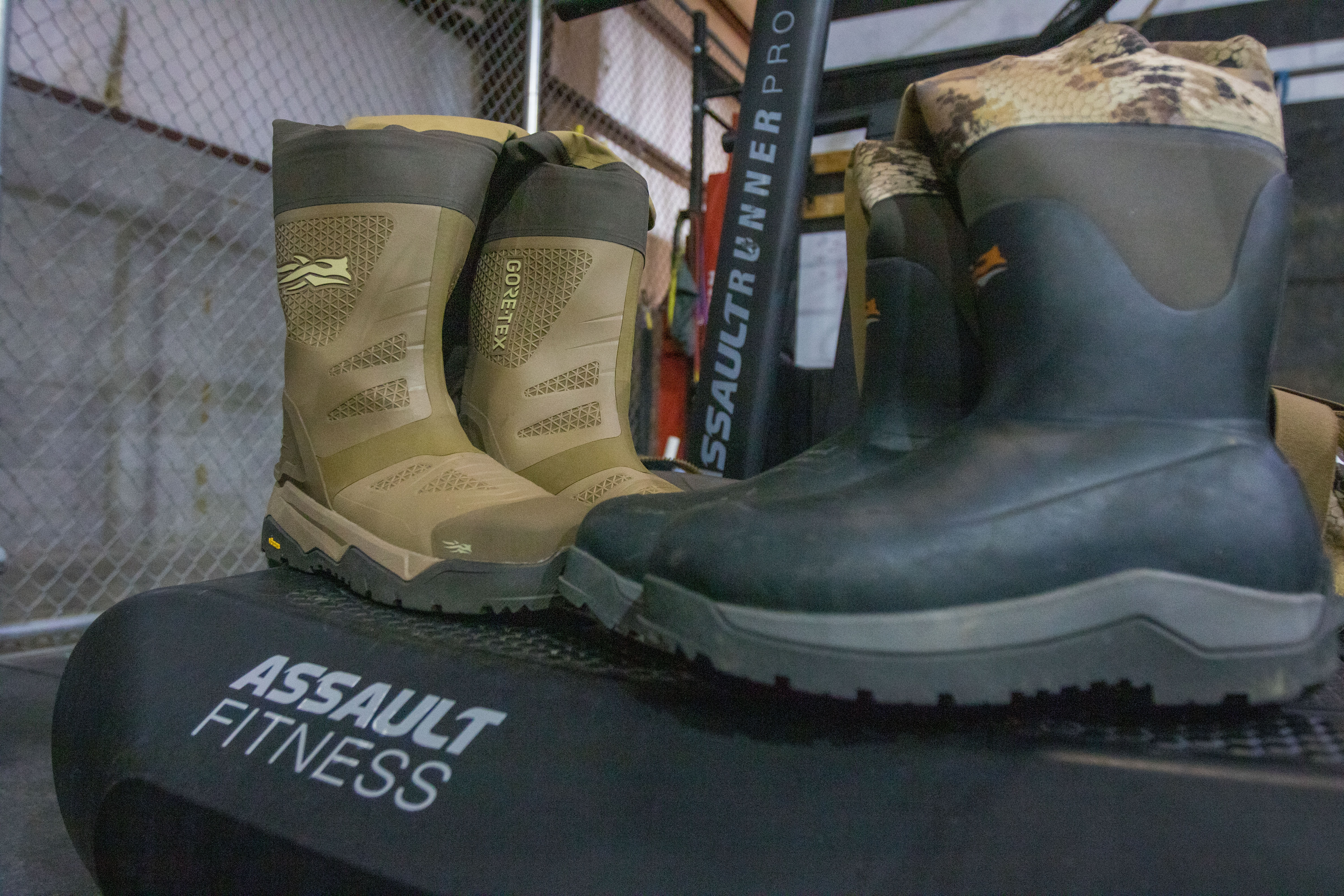
I received both the Delta Pro Zip GTX and the Delta VentLite Zip GTX waders before the primary duck season, but that wasn’t going to stop me from putting them to the test. I want to give you a real review, not some regurgitation of specs pulled from a marketing sheet.
Since the main upgrade of the VentLite is all about the boots, I decided to focus my attention there. Are they really more breathable? I hit the gym. In waders.
Treadmill Test
I decided that the treadmill would be the best place to test them. I ran a half-mile in each set of waders, giving my feet some time to cool off in between so as not to affect the test.
Now, I don’t have any fancy way to measure perspiration, so you’re just going to have to take my word on the results. They’re all about feel, which I think is more important anyway.
Would my feet just burn up in both? That’s what I expected. Or could I tell a real difference between the much heavier boot of the Delta Pro and the lightweight, allegedly breathable VentLite?
The Results
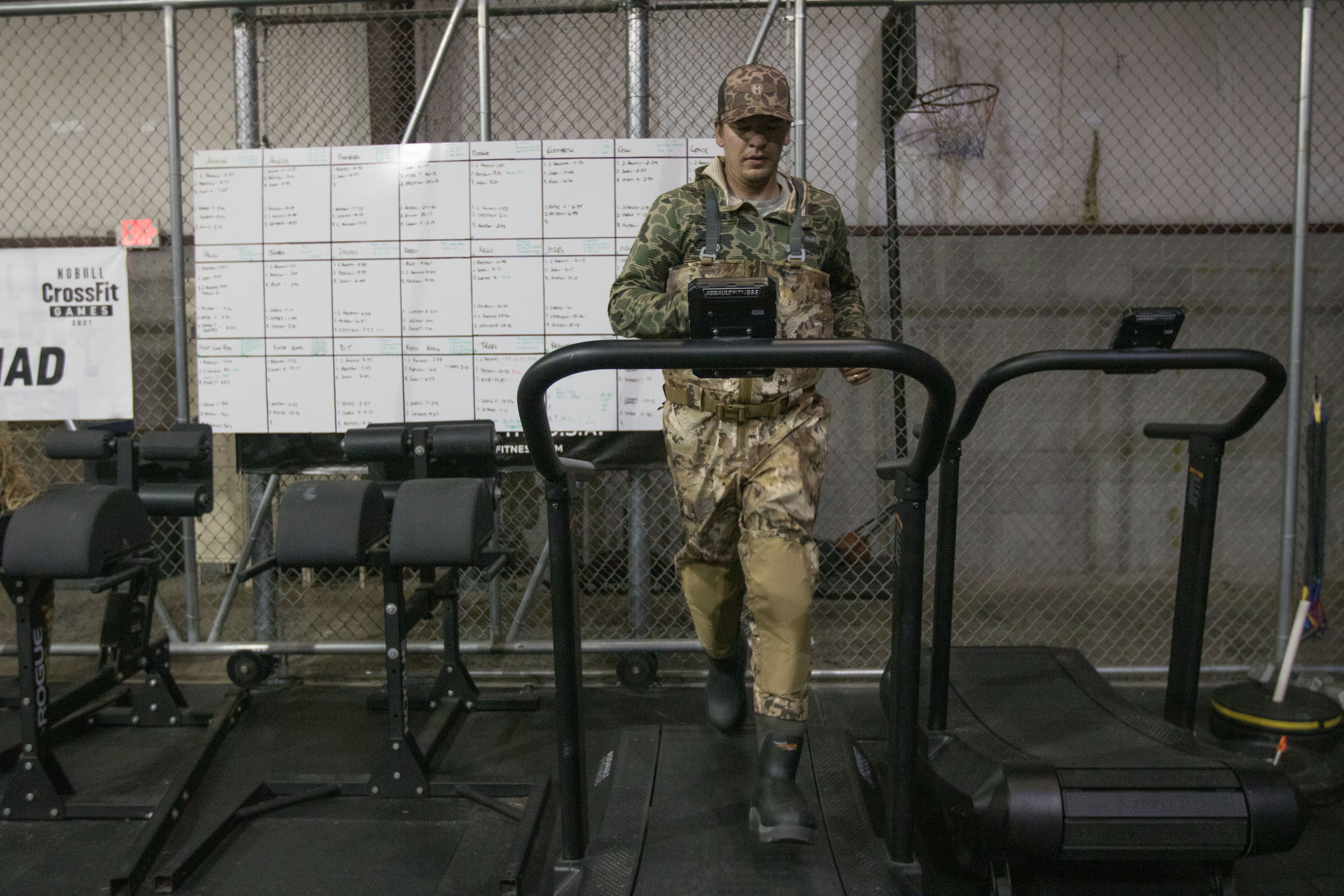
After a half-mile in the VentLite waders, my feet were not what I would call “hot.” Yes, they were warm, with a touch of sweat. But honestly, they weren’t hotter than my feet would be running in a really lightweight hiking boot. Overall, they were one of the coolest parts of my body after the jog, and I can say I do not recommend running in a multilayer GORE-TEX suit.
So, I did it again in the standard Delta Pro Zip waders. It was a very different experience.
At 300 m into the run, I felt my feet begin to heat up well past what they did in the VentLites. I was shocked at how fast that happened. It got progressively hotter in the boots, and things were mighty toasty and sweaty from my calves down by the end.
I noticed the added weight very quickly. By the end of the half mile in the standard boots, my legs were much more fatigued than they were with the VentLites.
With the VentLites, the fatigue was nonexistent. And while it would be ridiculous to say the VentLites felt as light as my tennis shoes, they are light enough that I didn’t really notice the weight on the run.
So, the result of the treadmill test: when things are hot, or you’re performing a high-output activity, the VentLite Boot will help your feet breathe, and thus keep them dry and warm. And the weight reduction is noticeable over distance. They are a superior rubber boot.
Some Real-World Testing With the SITKA Delta VentLite GTX Zip Wader
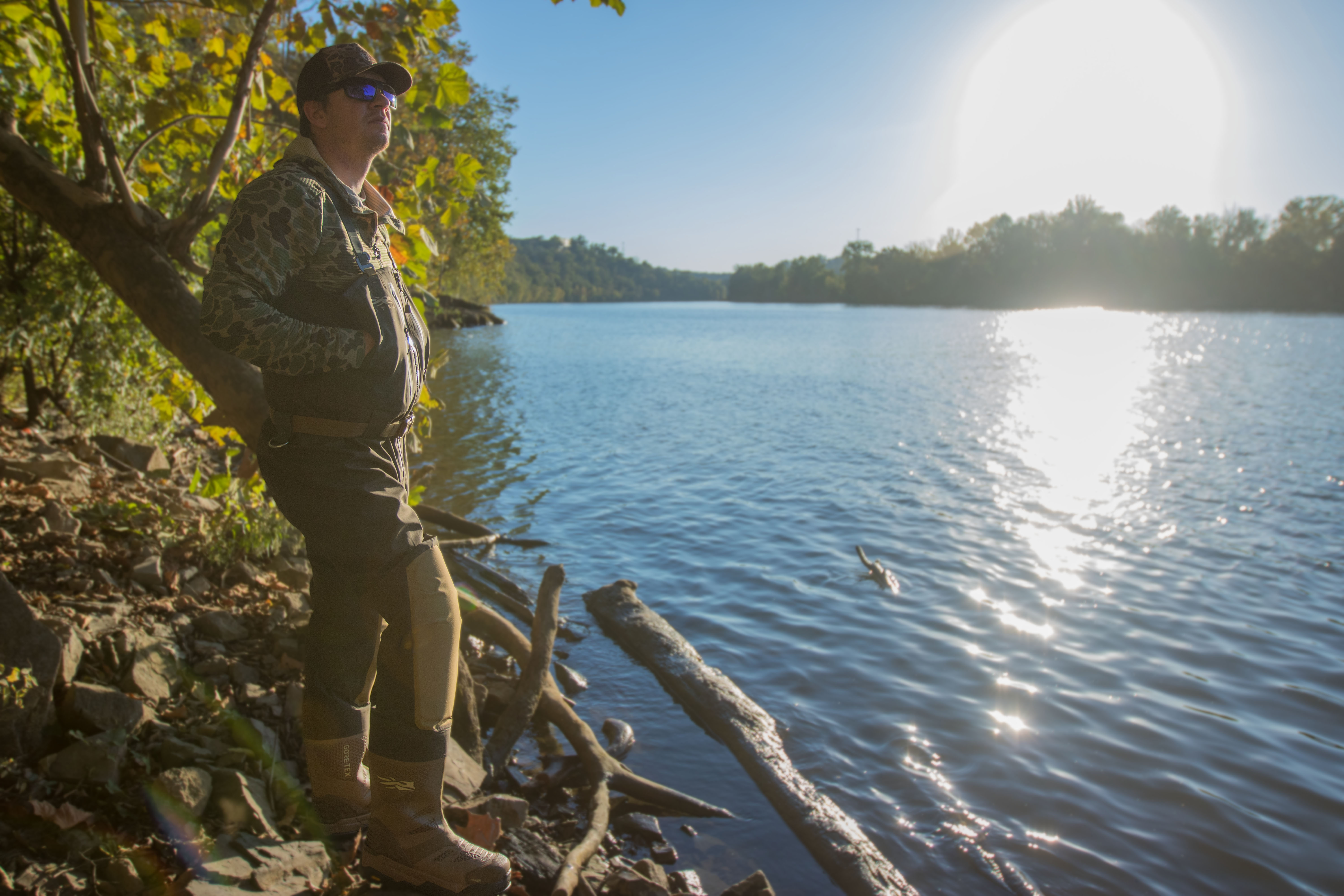
But “lab” tests are just lab tests. Field time is more important. But duck season is closed.
Fortunately, sometimes I shake the dust off the ol’ fishing guide boots. I rarely guide anymore, and have to give up precious weekend time to do it, but what can I say? Old habits die hard.
After testing the standard Delta Pros during the short Tennessee early duck and wood duck season, fishing guide trips provided the perfect (and only) opportunity to test the SITKA Delta VentLite Zip GTX Wader in the field. Here are my notes.
We Have an Interior Pocket, Folks!
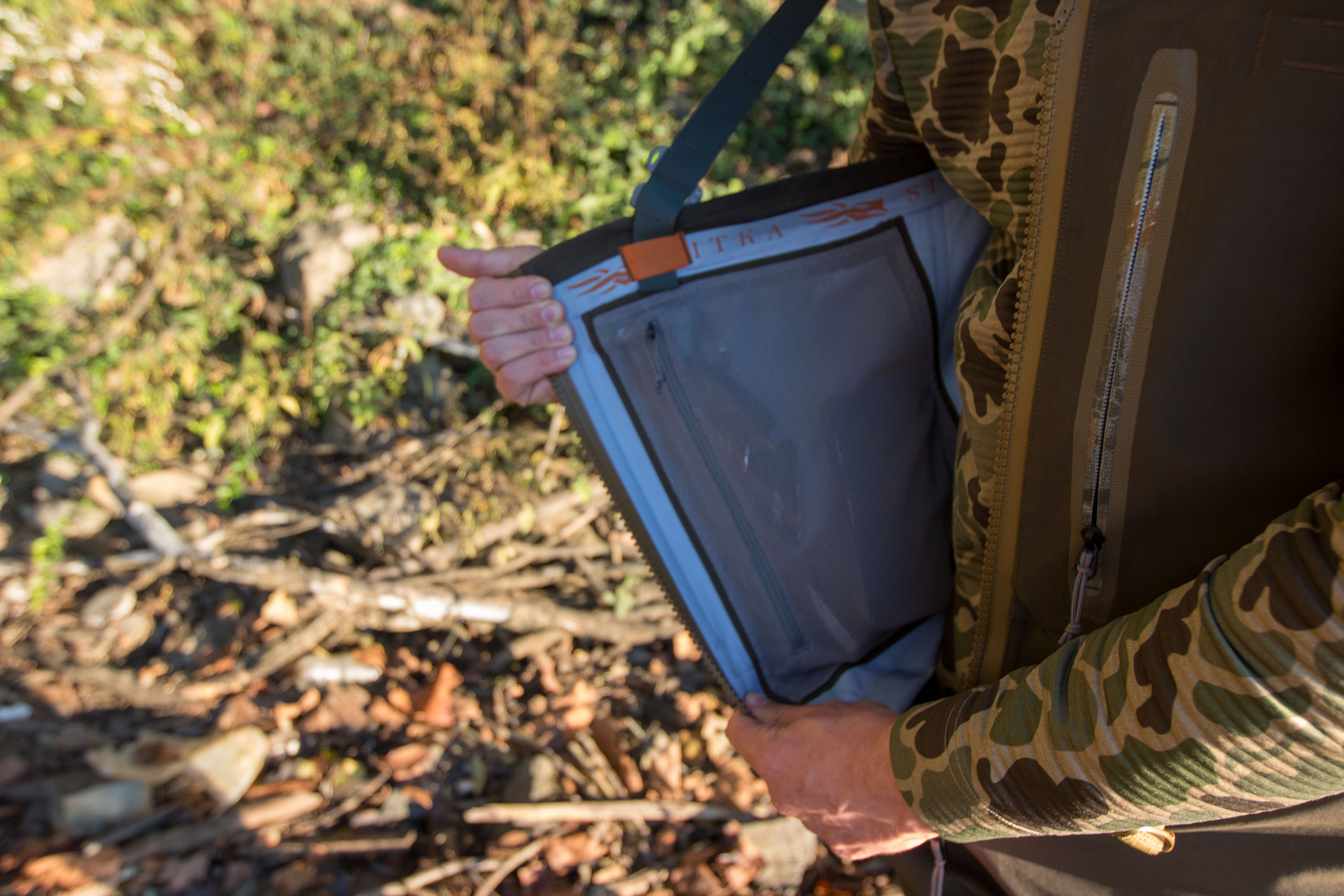
If you read my review of the updated standard Pro Zip GTX wader, you know my biggest complaint was the lack of any interior pocket. Any wader over a grand has to have one. And they don’t.
I’m happy to report that these waders do have an interior pocket on the right chest panel. The best part is, at roughly 9 inches wide by 12 inches long, it’s actually functional.
The addition of the interior pocket, while a small detail, paid off huge dividends in terms of minor annoyances. While I was hunting in the standard Deltas, my phone, wallet, keys, and all those other doodads you have to carry, but don’t need immediate access to, had to ride in the chest pockets.
That was annoying, because that stuff was always in the way. I want to stuff extra shells (I miss a lot), snacks, and calls in the easy-to-access pockets.
With the VentLites, all of that non-necessary stuff got tucked away into the interior chest pocket. I stuck it in there at the boat ramp and forgot about it. While out of the way, it was still easy to get to when I needed to snap a quick picture with my phone by unzipping the wader and reaching in.
Boot Performance
The boots are amazing. When compared to the heavier boots on the standard Delta Pros, these boots feel like I’m not even wearing waders. My feet were a comfortable temperature, even in the middle of the day, while rowing a boat for six hours.
It’s readily apparent that the VentLites have a slightly looser and more comfortable fit. It’s not that the standard boots are tight, but they are pretty snug around the middle part of my foot. The VentLites don’t really “grab” my foot anywhere. They’re roomy, which I think contributes to the breathability.
While the breathability is definitely noticeable in the heat of the day, the lighter weight is most apparent, especially after a long day on the water. I don’t feel like I have cinder blocks attached to my feet while walking up the boat ramp to get to the truck. The traction of the soles was good, if not great, whether I was in mud or on rock.
I was concerned about the waterproofness of the boots, with them being such a new concept. GORE-TEX waders leak eventually, so I thought this would be a weak point.
While three field days aren’t a long-term testament to durability, the boots are waterproof. The boots were sealed during multihour soaks when I hopped out of the boat to walk and wade. I ran them into a few submerged sticks, and nothing penetrated. SITKA put the criss-cross “exoskeleton” around the boot to add durability, and it works.
Really, the boots provide far superior all-day comfort. It’s not that the standard Delta Pros are uncomfortable by any means; it’s that the VentLites are more like wearing tennis shoes.
Cold Weather Performance of the SITKA Delta VentLite GTX Zip Wader
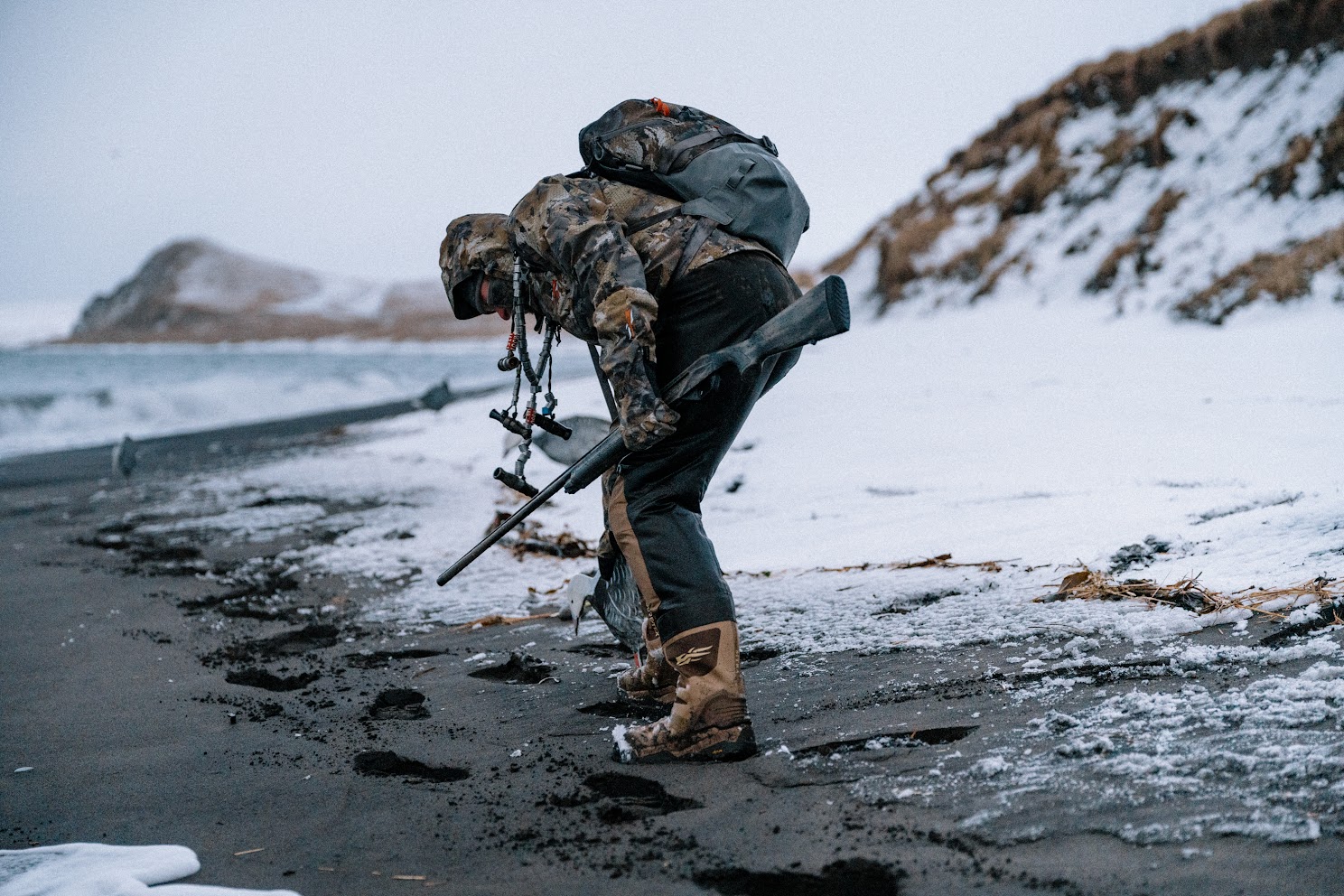
Unfortunately, I have not been able to test the waders in cold weather conditions. I could easily see the boots on the standard Delta Pros being warmer in the cold, because, well, they feel warmer.
But I could also see the VentLites being warmer in the field because they breathe more, keeping your feet drier and thus warmer. Once I’m able to test in the cold, I’ll update this review.
Other Differences
Both sets of the SITKA waders in my possession have the country of origin printed on the label. The standard Delta Pros are made in China, and the VentLites are made in Vietnam. I don’t know if that will be the case for every set of VentLites. I also don’t know if the following differences are due to the different origins, as they could be attributed to factory differences.
The knee pads on the VentLites are noticeably stiffer. It’s not bad, or good. They do the same job, but it is apparent.
The VentLites may have a slightly more athletic fit as well. The uppers feel the same, but it seems there might be a bit less baggy material around the upper leg of the VentLites. It’s almost imperceptible, and that overall more athletic feel could be attributed to the boots, and I’m just imagining the cut of the waders being different.
Is There Room for Improvement in the SITKA Delta VentLite Zip GTX Wader?
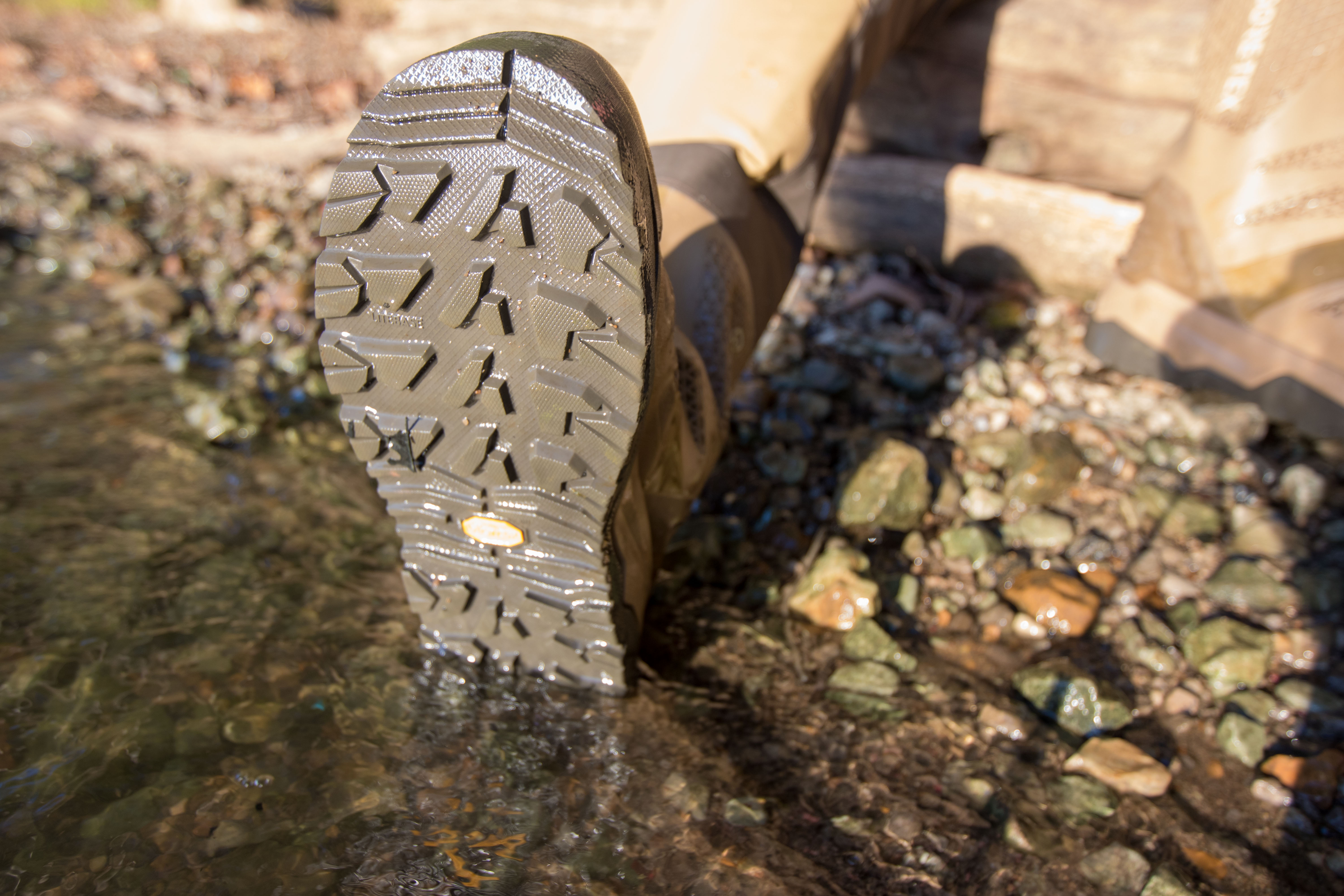
From the standpoint of a dedicated duck hunting wader, there really isn’t room for improvement. I’m going to go out on a limb and say these are the most impressive bootfoot waders I’ve worn, by a significant margin.
But I do have a suggestion for SITKA. And I will admit, I’m being highly critical since these are “hunting waders” and not “fishing waders.”
The one thing that would make these the ultimate, do-everything-wader, would be the ability to put hard bite studs into the sole. If you’re unfamiliar with it, it’s something fishing wader and wading boot manufacturers do. They’re little metal cleats that screw into the bottom of the boot to create rock-steady traction on slippery river rocks.
I know, that’s not a situation duck hunters are in often. But if you could put some of those on the bottom of these boots, foul-weather anglers would have the perfect wader. Bootfoot waders are becoming more popular with fishermen in the winter due to the warmth they provide. I, as well as many other guides I know, have made the switch.
I’ll still be wearing the VentLite Waders while wading in slippery rivers this steelhead season, because the boots are some of the most athletic, comfortable rubber boots ever to grace my feet. And if you’re an angler looking for a set of bootfoots, these are the best I’ve found.
But the extra insurance of studs would be nice. There’s your next update, SITKA. You’re welcome.
Hot Take: The Price Is Expensive, Not Ridiculous
A word on pricing as a whole, because I can already hear the groans and predict the upcoming memes. $1,500 is expensive. But it is not unreasonable. I realize that is going to be a controversial take, but let me explain.
VentLite boots alone are $400. The standard Delta Pros are $1,200. Tariffs are being used as an excuse to hike prices everywhere. SITKA could have gotten away with more.
“Well, the standard Delta Pros were already ridiculously priced.” No, they weren’t, and aren’t. Yeah, SITKA was one of the first in the duck hunting space to hit four figures for waders, but that’s been going on in the fishing world as well.
Take the SIMMS G4Z. That’s a fishing wader that perfectly matches the durability and quality of SITKA waders. They have a similar number of layers built throughout, and both are made of GORE-TEX. The G4Z will run you $1,100. And you still have to buy a set of boots, because they have neoprene booties.
So $1,500 for a super-durable wader, with one of the most advanced boots you’ll find? It’s not bad in terms of value.
Final Thoughts: Which SITKA Wader Is Best for You?
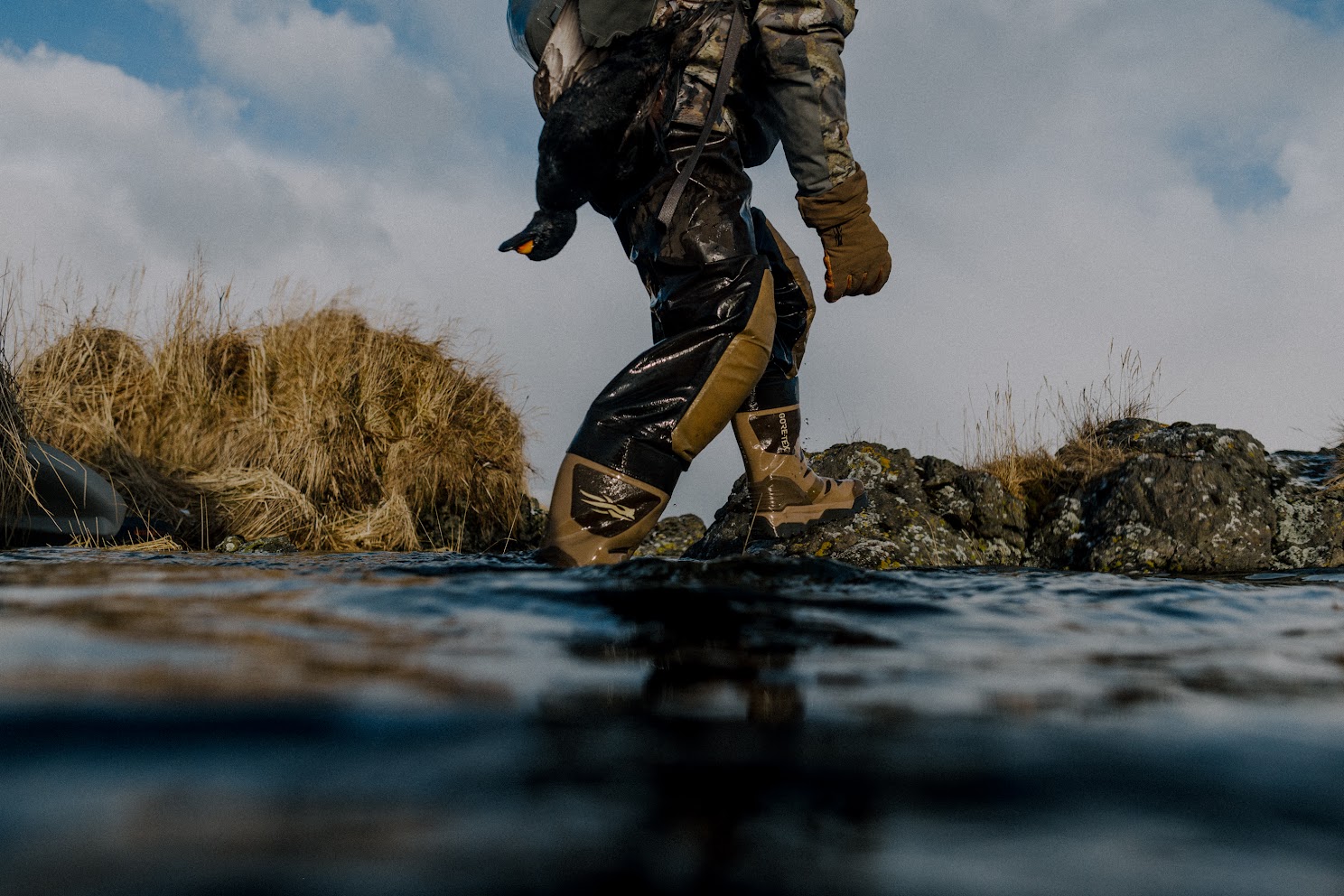
The SITKA Delta VentLite Zip GTX Waders are awesome. The SITKA Delta Pro Zip GTX Waders are also awesome. If you have the cash to spend on either of them, I don’t think you’ll be disappointed. So how do you choose if the extra $300 is leaving you on the fence?
If you only hunt in cold temperatures and don’t walk far on your hunts, the standard SITKA Delta Pro Zip GTX waders will suffice. Heck, for super-cold–weather hunts, they could actually be the warmer option. The jury is still out on that one.
But if you’re like me, you do more than roll up to a premade blind at a bougie duck club. You walk into tiny public land holes that you can’t get a boat to. Sometimes you may jump shoot ducks with your bird dog. Or you may need something for those cold-weather fishing trips where your feet turn to ice in frigid rivers.
The SITKA Delta VentLite GTX Zip Waders are built for those who are on the move and face different conditions throughout the season. I have a substantial wader collection, and these are among my favorites. The comfort, durability, and versatility can’t be beat by any other wader I’ve tried.
Read the full article here



